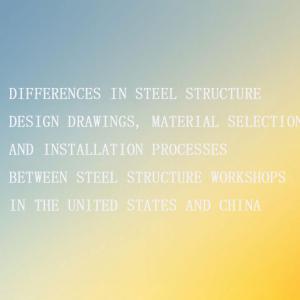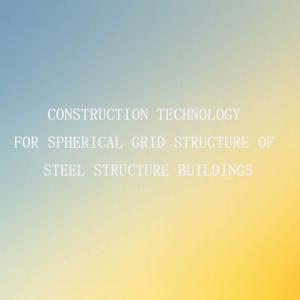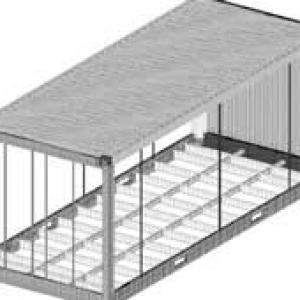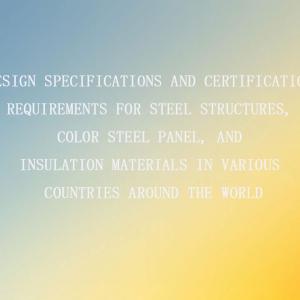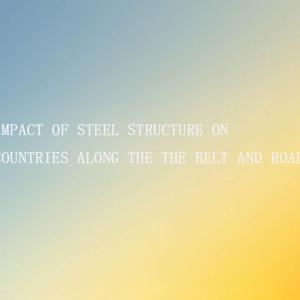The profound impact of the 14th Five Year Plan for the development of intelligent manufacturing on steel structure buildings and related industries
The profound impact of the "14th Five Year Plan" for the development of intelligent manufacturing on steel structure buildings and related industriesIn today's era of rapid technological development, the release of the "14th Five Year Plan" for the development of intelligent manufacturing has drawn a grand blueprint for the transformation and upgrading of many industries. For steel structure buildings, prefabricated buildings, and steel structure manufacturers, this plan is like a timely rain that will bring unprecedented changes and opportunities.
1、 The impact on steel structure buildings
1. Design and build intelligent upgrades
Under the promotion of the "14th Five Year Plan" for intelligent manufacturing, the design of steel structure buildings will be highly intelligent through advanced software such as computer-aided design (CAD) and building information modeling (BIM). Designers can conduct more precise structural analysis and optimization, fully considering various factors such as the mechanical performance, space utilization, and aesthetics of the building. For example, BIM models can simulate the entire lifecycle of steel structure buildings, predict potential issues that may arise during the construction process from the design phase, such as pole collisions and unreasonable installation sequences, and develop solutions in advance. In the construction process, intelligent construction equipment and robots will gradually be applied. For example, intelligent welding robots can complete welding work on steel structures with higher precision and efficiency, reducing human errors and improving weld quality. At the same time, automated lifting equipment can more accurately lift and install steel structural components according to preset programs, greatly shortening the construction period and improving construction safety.
2. Improvement of building quality and performance
Intelligent manufacturing helps improve the quality and performance of steel structure buildings. Through an intelligent quality inspection system, real-time monitoring and strict control can be carried out on the material, processing accuracy, welding quality, and other aspects of steel. For example, by combining non-destructive testing technology with intelligent sensors, comprehensive testing of internal defects and surface quality of steel structures can be carried out to ensure that every component meets high-quality standards. In terms of building performance, intelligent control systems can be integrated into steel structure buildings to achieve intelligent adjustment of energy consumption, lighting, ventilation, and other aspects of the building. Automatically adjusting ventilation systems and shading facilities based on changes in indoor and outdoor environments can reduce building energy consumption, improve building comfort and sustainability.
2、 The impact on prefabricated buildings
1. Promote the coordinated development of the entire industrial chain of prefabricated buildings
The 14th Five Year Plan for the Development of Intelligent Manufacturing emphasizes collaborative innovation in the industrial chain. For prefabricated buildings, this will enable seamless integration of design, production, transportation, construction, and other aspects. Steel structure manufacturers can share real-time information with architectural design units through intelligent platforms. Manufacturers can accurately produce components based on design data, reducing production errors and resource waste caused by information asymmetry. In the transportation process, the intelligent logistics management system can optimize transportation routes and scheduling plans to ensure that steel structural components are delivered to the construction site on time and safely. During the construction phase, the construction site can maintain close communication with component manufacturers through intelligent monitoring systems, provide timely feedback on component installation, and manufacturers can adjust subsequent production based on feedback to improve the operational efficiency of the entire prefabricated building industry chain.
2. Accelerate the standardization process of prefabricated buildings
Intelligent manufacturing requires standardization and modularization of products. In the field of prefabricated construction, this will promote the further popularization of standardized production of steel structural components. Standardized components are not only beneficial for manufacturers to improve production efficiency and reduce production costs, but also facilitate rapid assembly on construction sites. For example, establishing unified standards for steel structure beam column joints, wall panel connections, etc. can enable components produced by different manufacturers to have better interchangeability and compatibility. At the same time, standardized production processes also facilitate the introduction of intelligent production equipment and automated production lines, further improving the production quality and speed of prefabricated steel structure buildings.
3、 The impact on steel structure manufacturers
1. Production mode transformation
Steel structure manufacturers will shift from traditional extensive production to intelligent and refined production. Intelligent production equipment such as intelligent cutting machines, automated welding robots, CNC machining centers, etc. will become the main force of production. These devices can automatically complete steel cutting, welding, drilling and other processing procedures based on digital production instructions, with higher processing accuracy. For example, intelligent cutting machines can automatically adjust cutting parameters based on CAD drawings, achieving precise cutting of complex shaped steel and reducing material waste. At the same time, manufacturers will establish an intelligent production management system to monitor and manage production progress, quality control, equipment maintenance, etc. in real time, improving production and operational efficiency.
2. Enhancing market competitiveness
Under the wave of intelligent manufacturing, steel structure manufacturers that can achieve intelligent transformation first will stand out in market competition. On the one hand, the high-quality products and efficient production speed brought by intelligent production can meet the growing personalized needs and fast delivery requirements of customers. For example, customers can customize special specifications of steel structural components through online platforms, and manufacturers can quickly respond and organize production using intelligent production systems. On the other hand, intelligent manufacturing helps to reduce production costs by optimizing production processes, reducing manual errors and material waste, and making products more competitive in price. In addition, an intelligent after-sales service system, such as remote monitoring and fault warning of steel structure buildings using IoT technology, can provide customers with a better service experience and further consolidate the market position of manufacturers.
The "14th Five Year Plan for the Development of Intelligent Manufacturing" has opened a door to the intelligent future for steel structure buildings, prefabricated buildings, and steel structure manufacturers. Relevant enterprises should actively seize this historical opportunity, increase investment in intelligent technology research and development, equipment upgrades, talent cultivation, and other aspects, achieve their own transformation and sustainable development, and jointly promote China's construction industry to move towards a new era of intelligent manufacturing.
